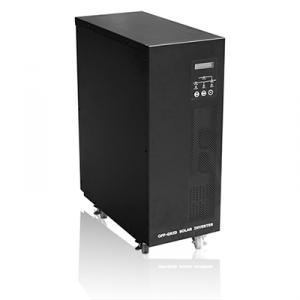Solar Off Grid Inverter
Solar Off Grid Inverter Related Searches
Led Light Bulbs For Ceiling Fixtures Led Lamps For Ceiling 42 In Ceiling Fan With Light Parts For Light Fixtures Light Projector For Christmas Grill With Led Light Bar Hanging Lights For Kitchen Bar Ceiling Lights For Sitting Room Ceiling Brackets For Lights Ceiling With Led LightsHot Searches
Aluminium Wire Mesh Manufacturers India Ceiling Fan Lowest Price Aluminium Scaffold Planks Sale Aluminium Walkway Mesh Prices Aluminum Bar Stock For Sale High Mast Light Price List Solar High Mast Light Specification High Mast Light Specification 6061 Aluminum Bar Stock Price Aluminum Bar Stock Price Stage Light Price Solar Inverter Fault Light Led Light Manufacturers Aluminum Round Bar Stock Sizes Aluminum Round Bar Stock Near Me Ceiling Fan Lowest Price Aluminum Flat Bar Stock Near Me Aluminum Bar Stock Sizes Aluminum Bar Stock Suppliers Aluminum Bar Stock Near MeSolar Off Grid Inverter Supplier & Manufacturer from China
Okorder.com is a professional Solar Off Grid Inverter supplier & manufacturer, offers integrated one-stop services including real-time quoting and online cargo tracking. We are funded by CNBM Group, a Fortune 500 enterprise and the largest Solar Off Grid Inverter firm in China.Hot Products
FAQ
- To calculate the total power capacity for a solar inverter, you need to consider two main factors: the maximum power output of the solar panels and the efficiency of the inverter. First, determine the maximum power output of the solar panels in watts. Then, divide this value by the efficiency of the inverter, usually given as a percentage. The resulting value will give you the total power capacity of the solar inverter in watts.
- What is the difference between low voltage grid connection and medium voltage grid connection?
- Have a low pressure through the function set, low pressure through the scope of the project requirements, grid and network requirements and the actual situation of the design), low voltage grid to pass the voltage range is less than the medium pressure, parameter settings are not sensitive and complex.
- The role of a solar inverter in reactive power compensation during grid disturbances is to regulate and manage the reactive power flow between the solar panel system and the grid. During grid disturbances, such as voltage fluctuations or power factor variations, the solar inverter helps maintain a stable and balanced flow of reactive power, ensuring efficient and reliable operation of the solar panel system while minimizing the impact on the grid.
- Yes, there are government incentives available for solar inverters. These incentives vary by country and region, but often include tax credits, grants, and rebates to encourage the adoption of solar energy. It is recommended to check with local authorities or consult a solar energy professional to determine the specific incentives available in a particular area.
- A solar inverter handles variations in temperature by employing temperature compensation techniques. It continuously monitors the temperature of the solar panels and adjusts its output voltage and frequency accordingly. This helps maintain optimal performance and efficiency, as temperature changes can affect the electrical characteristics of the panels. Additionally, inverters may have built-in cooling systems or heat sinks to dissipate excess heat and prevent any damage caused by high temperatures.
- Yes, a solar inverter can be integrated with a smart home system. Many modern solar inverters have built-in communication capabilities, such as Wi-Fi or Ethernet, which allow them to connect to a smart home system. This integration enables homeowners to monitor and control their solar power production and energy consumption conveniently through a centralized smart home platform. They can track energy production, set energy usage preferences, and even automate certain functions based on available solar power.
- A solar inverter can affect the overall system efficiency at different temperatures by adjusting its operations to optimize performance. At higher temperatures, the efficiency of the inverter may decrease due to increased internal losses and reduced power output. To mitigate this, modern inverters utilize advanced technologies such as maximum power point tracking (MPPT) algorithms to adapt to the changing temperature conditions. These algorithms adjust the operating parameters of the inverter to maximize energy production by maintaining the optimal voltage and current levels. By dynamically responding to temperature changes, a solar inverter can help maintain higher overall system efficiency across a range of temperatures.
- Total harmonic distortion (THD) refers to the measure of distortion or deviation from the ideal sine wave in an electrical system. In the case of a solar inverter, high THD levels can negatively impact its performance. Excessive harmonic distortion can lead to increased heat generation, reduced power efficiency, and potential damage to connected devices. Moreover, higher THD levels may also result in poor power quality, affecting the overall reliability and stability of the inverter's output. Therefore, minimizing total harmonic distortion is crucial to ensure optimal performance and reliable operation of a solar inverter.













































